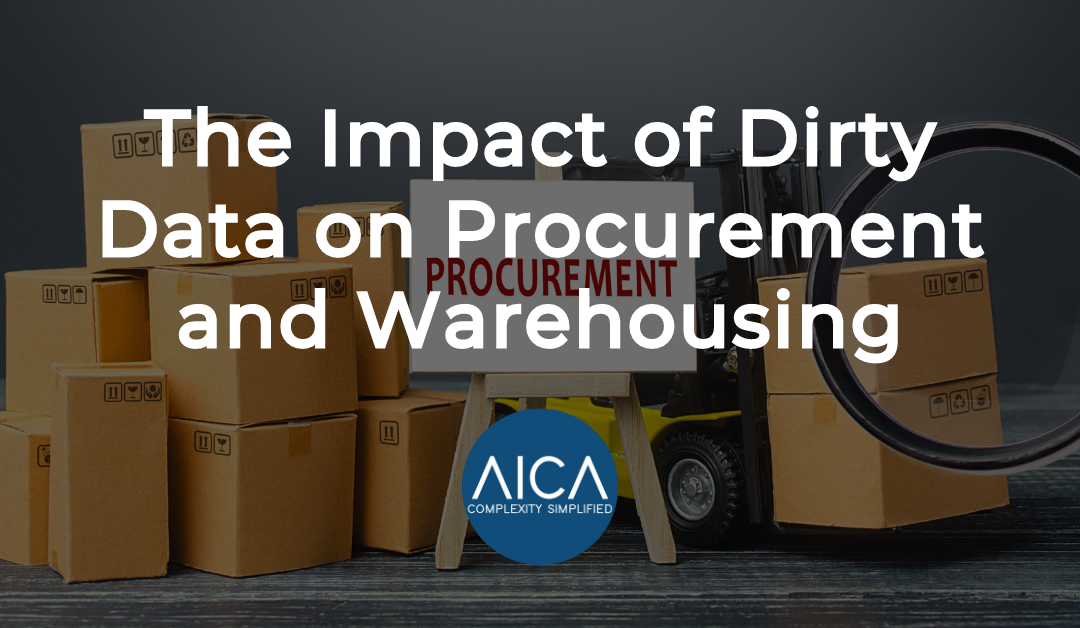Businesses are quickly realising that their operational efficiency is only as good as the data they base it on. This truth reverberates loudly in sectors such as procurement and warehousing, where the success of processes is largely predicated on the quality of data utilised. So, when the data is ‘dirty’ — inaccurate, incomplete, inconsistent, or outdated — the repercussions can be more than just operational hiccups; it can lead to increased costs and a host of other problems.
The Price of Dirty Data in Procurement
The procurement process thrives on data accuracy. From sourcing suppliers to managing contracts and tracking order deliveries, every step requires dependable data. However, with dirty data, businesses risk missteps that can result in increased costs.
For example, inaccurate supplier data can lead to incorrect orders, affecting product availability and ultimately sales. Inconsistent data can cause duplicated efforts, leading to wasted time and resources.
Outdated vendor information might result in missed discounts or, worse, compliance issues. All these inefficiencies inflate procurement costs and can seriously impact an organisation’s bottom line.
The Costly Consequences of Dirty Data in Warehousing
In warehousing, the impact of dirty data can be equally, if not more, damaging. Warehouses operate on meticulously planned processes to ensure optimal space utilisation, inventory management, and quick order fulfilment. Dirty data can disrupt these processes, leading to several costly consequences.
With inaccurate inventory data, a business can find itself either overstocked or understocked, both of which carry hefty costs. Overstocking leads to increased warehousing costs and the risk of product obsolescence, while understocking results in lost sales opportunities and decreased customer satisfaction.
Inaccurate product information can also disrupt picking and packing processes, leading to mistakes in order fulfilment. Such errors not only increase the cost of returns and replacements but also damage the company’s reputation.
The Cascading Effects of Dirty Data
Aside from direct cost implications, dirty data has far-reaching effects on an organisation. It can lead to poor decision-making as the data foundation is flawed. This can significantly impact an organisation’s strategic direction and growth potential.
Dirty data can also cause inefficiencies across interconnected departments. For instance, inaccurate procurement data can lead to issues in production schedules, while dirty warehousing data can affect sales and distribution strategies. These operational inefficiencies can also demoralise employees, leading to decreased productivity and higher turnover.
Harnessing the Power of Clean Data with AICA
To counter these issues and harness the power of data, businesses must ensure their data is clean — accurate, complete, consistent, and updated. This is where AICA comes in.
AICA specialises in product data cleansing, enrichment, and comparison. Through our advanced ML algorithms, we ensure data accuracy, completeness, and consistency, which empower organisations to make informed, data-driven decisions.
Our data cleansing process rectifies the inaccuracies in existing datasets, while our data enrichment services enhance the value of data by filling in gaps and adding relevant product attributes. Finally our product data comparison helps businesses benchmark their product offerings and stay ahead of the competition.
Conclusion
In today’s business landscape, dirty data is an expense organisations can ill afford. It’s time to recognise the true costs of dirty data and take definitive action. By embracing our data cleansing, enrichment, and comparison, services organisations can leverage clean data for operational efficiency, cost savings, and overall business growth. Follow this link to find out more.

